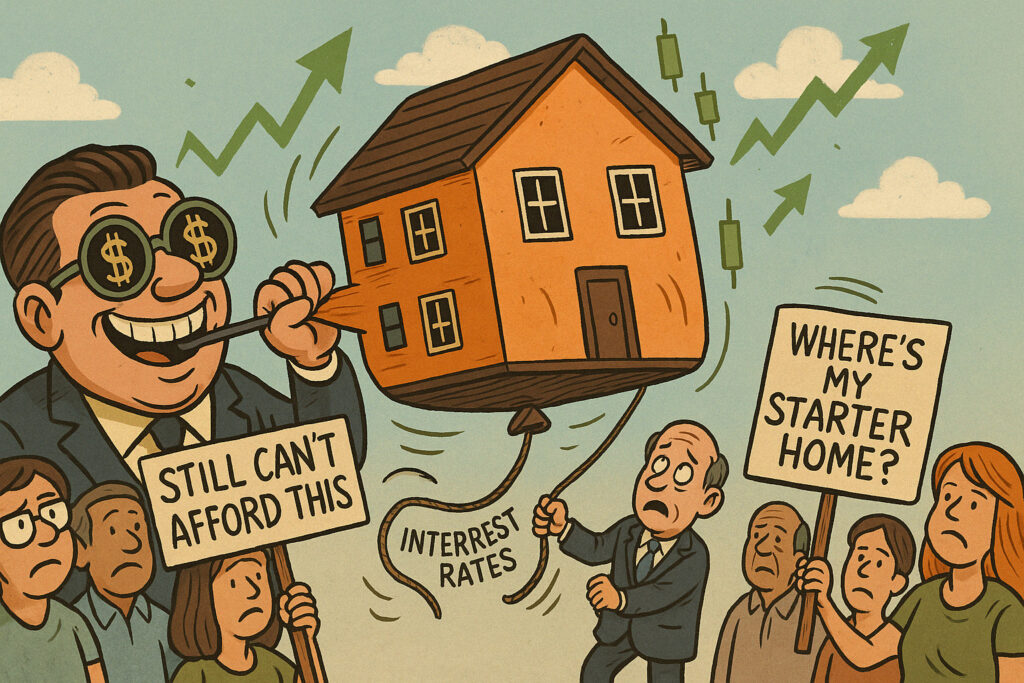On March 19, 2025, the U.S. housing market took center stage as the latest data on housing starts beat expectations, sparking a rally in real estate stocks and reigniting discussions about the strength of the American economy amid fluctuating interest rate expectations.
Housing Starts Data Overview
The U.S. Census Bureau reported that housing starts surged to an annualized rate of 1.55 million units in February, well above the market forecast of 1.44 million. This 7.6% month-over-month increase reflects a sharp rebound in residential construction activity, driven largely by renewed demand in the single-family home segment.
- Single-family starts rose 10.2% to a seasonally adjusted annual rate of 1.12 million units.
- Multifamily starts also edged higher, although more modestly, by 3.4% to 430,000 units.
This upside surprise came on the heels of recent indicators suggesting resilience in the labor market and early signs of easing mortgage rates.
Real Estate Stocks React
Markets responded quickly to the upbeat housing report, with major real estate-related equities posting solid gains:
- Lennar Corp (LEN) surged +4.1% to close at $162.80.
- D.R. Horton (DHI) climbed +3.8%, finishing at $141.15.
- The SPDR S&P Homebuilders ETF (XHB) gained +2.9%, outperforming the broader S&P 500.
The broader S&P 500 Index closed up 0.6% at 5,170, while the Nasdaq Composite added 0.7%, buoyed by continued optimism in housing and select technology shares.
Interest Rate Implications
This housing report comes just one day ahead of the Federal Reserve’s interest rate decision. While most analysts anticipate the Fed to hold rates steady, the stronger housing data adds to the narrative that the U.S. economy remains robust, which could delay any potential rate cuts.
Recent commentary from Fed officials has emphasized a data-dependent stance, and a hot housing sector might pressure policymakers to keep financial conditions tighter for longer.
Mortgage Rates and Affordability
Interestingly, mortgage rates have slightly eased in recent weeks, with the average 30-year fixed mortgage now at 6.62%, down from a recent high of over 7%. This has given potential homebuyers some relief, spurring fresh demand particularly in the entry-level housing segment.
However, housing affordability remains a challenge:
- Median new home prices are still elevated at $416,000.
- Inventory shortages persist in many urban and suburban areas.
Builders have responded by ramping up construction in mid-tier and affordable housing sectors, especially in fast-growing Sun Belt regions such as Texas, Florida, and Arizona.
Analyst Insights and Market Outlook
Economists and market strategists offered mixed reactions:
“This is a clear signal of underlying economic strength,” said Jane Matthews, Senior U.S. Economist at Ridgeway Capital. “It complicates the Fed’s job—strong housing could stoke inflation again.”
“Investors should be cautious,” warned Ben Ibarra, Chief Equity Strategist at Horizon Asset Management. “Real estate is bouncing now, but if rates creep higher again, this momentum could be short-lived.”
Still, the medium-term outlook remains constructive, particularly if inflation continues to cool and the Fed manages to engineer a soft landing.
Global Context and Capital Flows
International investors have also taken note. The resilience of the U.S. housing market has prompted renewed interest in U.S.-based REITs and construction firms, especially from European and Canadian institutional players.
This renewed capital inflow has helped strengthen the dollar modestly, with the DXY Index ticking up 0.2% to 104.12 on the day.
Sector Rotation and Broader Equity Themes
The housing data coincides with a broader rotation into cyclical sectors, as investors bet on continued economic expansion:
- Materials and Industrials rose +1.1% and +0.8% respectively.
- Technology remained strong but took a backseat, with the Nasdaq 100 gaining just +0.4%.
Real estate, previously underperforming in a high-rate environment, appears to be regaining favor as a key cyclical play for Q2 2025.
Conclusion
March 19, 2025, delivered a clear message to investors: the U.S. housing market remains surprisingly resilient. Strong housing starts numbers, rallying builder stocks, and easing mortgage rates suggest that residential real estate could be a pillar of growth in the months ahead.
However, with the Fed looming and inflation still a wild card, market participants should brace for continued volatility. For now, the rally in housing-related assets provides a welcome boost to equity markets—and a compelling narrative of economic strength amidst uncertainty.
Prepared for BCM Markets Financial Blog Daily – Your daily lens on real-world financial events.
